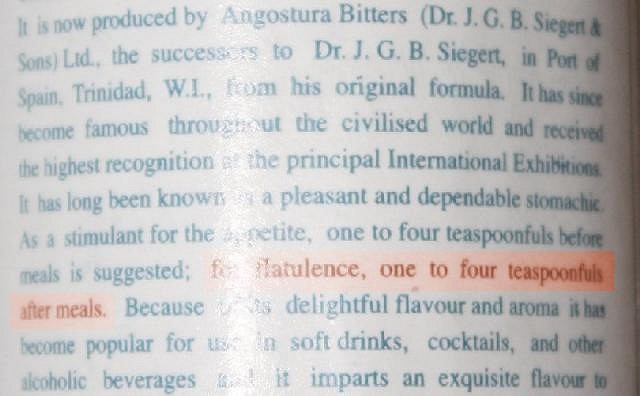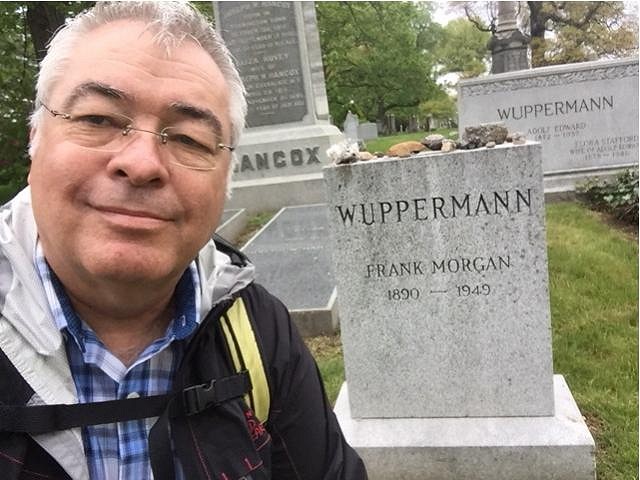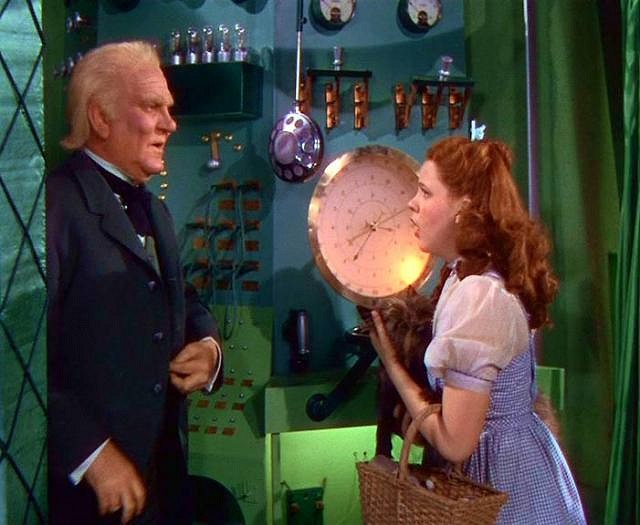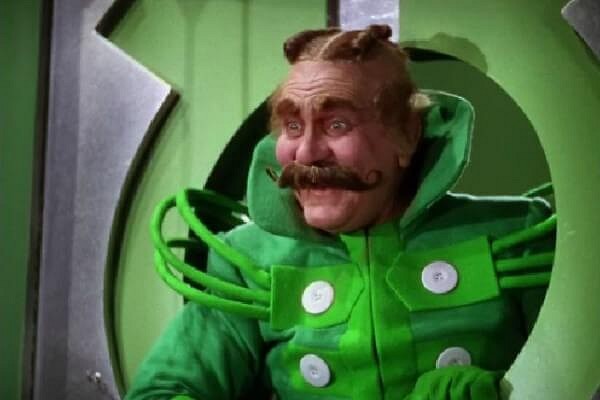Tiki Central / Tiki Drinks and Food
Nice article about Angostura Bitters
Pages: 1 16 replies
|
W

WestADad
Posted
posted
on
Thu, Mar 1, 2012 12:33 PM
Ran across this today while reading up on some tequila. Had some nice info on the product and a tasty looking recipe towards the bottom. http://www.drinkspirits.com/distillers/angostura-bitters/ Cheers! Chris |
|
J
jingleheimerschmidt
Posted
posted
on
Thu, Mar 1, 2012 3:08 PM
I'm still nervous about another Angostura drought. Thanks for the link to that article! |
|
CTIT
Chuck Tatum is Tiki
Posted
posted
on
Thu, Mar 1, 2012 3:32 PM
What a "Bitter" story..... |
|
M
MadDogMike
Posted
posted
on
Thu, Mar 1, 2012 4:14 PM
Those links have a way of going bad over the years, here's that article Angostura – Behind The Bitters One of the important things to understand about Angostura is that they are extremely protective about their recipe for Angostura Bitters. In fact, only five people in the world know the recipe and they’ve signed an agreement not to travel all together or all eat at the same restaurant at the same time (or so I’m told). The recipe is also in a vault in the US, but the whole not flying together or eating together thing adds to the mystique (it’s a lot like the lore around Coca-Cola or Chartreuse). Unfortunately, this means that this article doesn’t have any pictures from where Angostura makes their bitters: photography is strictly forbidden, and Angostura will not talk about any of the elements that go into their famous bitters. All the mystery and protectiveness over the world’s best selling bitters comes from a long history of trying to fend off competitors, imitators, and counterfeiters in the bitters space. Angostura Bitters got its start in 1824 when Dr. Johann Gottlieb Benjamin Siegert, a German doctor living in Venezuela, developed a medicinal remedy for stomach ailments within Simon Bolivar’s troops at the military hospital where he was the Surgeon-General. He named these bitters simply “Aromatic Bitters” and administered them as medicine. These bitters remained a well-regarded tonic with the troops and among family and friends. It wasn’t until 1853 when Dr. Siegert’s son, Carlos C. Siegert, returned from his education in Europe and devoted himself to the bitters business that things really took off. Angostura went from selling less than 20 bottles a year to having worldwide distribution. One of the amazing things about this is that Carlos C. Siegert toiled at the bitters business without any participation in the profits – he did it because he wanted to help his father. In 1870 Dr. Siegert died and Carlos decided to bring on his brother Alfredo to help with the business. In 1875 the brothers moved the business to the Island of Trinidad (only 7 miles off the coast of Venezuela). Trinidad was an English territory and the bitters, now known as Angostura Bitters (after the Siegert’s home town), began to find favor among British troops, who brought the bitters back to the UK. They found that mixing it with their Navy gin rations it made a simple drink which was both delicious and medicinal. This drink became became known simply as “pink gin” after the pinkish hue that Angostura bitters gets when it is diluted. It was here that the bitters would move from being a medicine to something that was used to help imbibe. The Siegert Brother’s business became successful and with its popularity came a great deal of imitators and counterfeiters. It was quite by accident that Angostura would have such distinct and iconic packaging. Trying to rush a bottle of bitters for a competition, one of the Siegert Brothers ordered the bottles and the other, the labels. Unfortunately they miscommunicated and the label was bigger than the bottle. They lost the competition but the judges said that they should keep the distinct mismatched packaging. This helped make the bitters one of the most recognizable spirits-related products in the world. You can’t miss it: it’s the one with the label that’s too big. Angostura’s label helped define the iconic bitters, but it was Prohibition that really made Angostura bitters into the leading bitters in the world. Prohibition killed a majority of Angostura’s competition, and so when it was repealed, Angostura quickly became the dominant bitters in America and then the rest of the world. Secrecy has always been extremely important to Angostura, and that secrecy began with the Siegert Brothers. They made a deal with Trinidad customs not to inspect the packages of herbs and spices that are imported to make the bitters. The actual process of assembling the herbs and spices is a complex one. The herbs and spices are first shipped to England where they are are bagged in coded, nondescript bags, and then shipped to Trinidad. In Trinidad, one of the select few assemble the blend of herbs and spices in a secret room called “The Sanctuary.” This herb blend is dumped down a shoot into a grinder which crushes and mixes the blend. The worker on the floor doesn’t even know what herbs and spices are in the mix. The only ingredients which are known for sure are gentian (a bittering agent), sugar, caramel, and a spirit base. It’s clear that the bitters also have some sort of citrus, and the bitters room smells like baking spices. Aside from what’s on the label, we will never know for sure. This blend goes from the grinder into a large cylindrical container. This container is put on top of a tank filled with a sugar-based distillate which is heated and percolates through the blend. The bitters tanks look like big coffee percolators. This process takes at least 8 hours (again, the exact time is a secret). The liquid is then pumped into big tanks (which are painted to look like Angostura bitters bottles) where the caramel and sugar are added and diluted with distilled water from 95% alcohol to 44.7%. A lot of whiskey and vodka producers spend a lot of time talking about their water, and you wouldn’t think a small island off the coast of Venezuela would have great water. The island of Trinidad actually has a large area of dense rain forest and the city of Port of Spain sits at the base of many of those mountains and hills, so the fresh spring water from the rain forest flows down the mountain to the city. I think this is an important element both for Angostura bitters and their rum. The bitters are then bottled and the signature oversized label is affixed. From its origins as a digestive tonic, Angostura bitters has become one of the consistently important tools used in preparing cocktails. Many of the world’s best cocktails use Angostura bitters, including The Manhattan, Old Fashioned, Champagne Cocktail, and Pisco Sour. Angostura bitters are extremely important in spirit-based cocktails that don’t contain citrus to balance out the sweet and strong elements. Angostura bitters also temper the acidity when used in citrus cocktails (the same impact it has on stomach acid), which is why Angostura bitters are so good as a digestive. Angostura’s popularity has lead to its use beyond cocktails into soft drinks, cooking, and, ironically enough, taken directly as a tonic (which is very popular among bartenders who have over-imbibed or overeaten). Mixed with soda water, Angostura bitters creates a very light and sippable drink that is ideal for people who want to get something at a bar without alcohol. Five dashes of bitters in 8 ounces of soda water only has 0.24% alcohol by volume, which is low enough to be labeled as ‘non-alcoholic’ in many countries. In Trinidad, Angostura sells a product called LLB which is a lemon and lime soda with Angostura bitters. It’s extremely delicious and is often used as a mixer for rum. On the culinary side, Angostura performs many of the key functions that it does in cocktails. It enhances and binds flavors, tempers acidity, and acts as a digestive. Angostura bitters pairs very well with fish, lamb, and does something magical to sauerkraut. A fantastic use for Angostura bitters in food is in a dry rub for barbecue, dehydrated in salt. With the current classic cocktail revival, there’s been a lot of attention on the bitters space and many new products offering a variety of flavors (Angostura even offers orange bitters). Along with that have been a few cocktails that have explored using Angostura and its complex blend of flavors as the base spirit, including the Trinidad Sour and the Santisma Trinidad, which was created by Argentinian bartender Ezequiel Rodriguez for the 2012 Angostura Global Cocktail Challenge. Santisma Trinidad Shake and serve in a short rocks glass over ice. Garnish with grapefruit zest. While the Trinidad Sour is an amazing exploration of Angostura as the base spirit, the Santisma Trinidad is a drink you can actually enjoy more than one of, and it showcases the fantastic flavors in the bitters without being overwhelming. It’s amazing to think that a little tonic developed in a military hospital in Venezuela and then produced in the tiny island of Trinidad could become such a major part of how people imbibe, and just how much history, and secrecy, is contained in each little dash of bitters. |
|
Q
Q-tiki
Posted
posted
on
Fri, Mar 2, 2012 5:18 AM
Great article MDM! Many mahaloz for sharing. :) Cheers! clink |
|
M
MadDogMike
Posted
posted
on
Fri, Mar 2, 2012 6:41 AM
I can't take credit for that Q Tiki - WestADad posted the link, I just copied it here so it would be more permanent. |
|
T
thePorpoise
Posted
posted
on
Fri, Mar 2, 2012 8:38 AM
best grenadine i've ever bought was made by Angostura. havent been able to find it anymore, anybody know if they still make it? |
|
T

TikiTomD
Posted
posted
on
Fri, Mar 2, 2012 9:17 AM
Porpoise, I haven't seen the Angostura grenadine product on the local shelves for some time now, though it may still be made. In lieu of that, I use and like Fee Brother's American Beauty Grenadine Cordial Syrup and order it online from Bar Products in Largo, Florida. -Tom |
|
Q
Q-tiki
Posted
posted
on
Fri, Mar 2, 2012 11:09 AM
I will happily amend that to include you both! Thanks West-a-Dad! These are the things I love about TC. So much cool information on subjects I've never even considered before. |
|
M
MadDogMike
Posted
posted
on
Mon, Mar 5, 2012 9:30 PM
"For flatulance, take 1 - 4 teaspoonfuls after meals" From the fine print off the Angostura bitters bottle :lol:
I bought a bottle at WalMart tonight, not sure what I'll do with it but I figured at 4 bucks I couldn't go wrong. "Ha, ha - I whooped ya', I whooped ya' all! You'll think twice before messin' with Percival C. McLeach!" [ Edited by: MadDogMike 2012-03-06 06:25 ] |
|
V
VampiressRN
Posted
posted
on
Mon, Mar 5, 2012 9:59 PM
Thanks for the Rticle...it was a good read...I do enjoy a pink gin every once in a while!!! |
|
W

WestADad
Posted
posted
on
Tue, Mar 6, 2012 5:30 AM
I do like the label for sure! Hmmm, now I know why I'm less gassy after a good Old Fashioned! :) |
|
A

AceExplorer
Posted
posted
on
Wed, May 23, 2018 10:57 AM
I'm contributing a bit of historical information about someone formerly tied to Angostura Bitters in the US. I was recently out exploring and took this selfie of the gravesite of one "Frank Morgan."
Here are a few details about this nice gentleman and his affiliation with Angostura Bitters:
But - aside from Angostura Bitters, can anyone tell me what Frank Morgan is BEST known for? Here are some hints:
|
|
H
HopeChest
Posted
posted
on
Wed, May 23, 2018 11:34 AM
Holy CRAP - The Wizard!!!!!! |
|
A

AceExplorer
Posted
posted
on
Wed, May 23, 2018 1:09 PM
Exactly! He is described as "MGM character actor best remembered as 'Professor Marvel' aka 'The Wizard' in 'The Wizard of Oz' (1939). He also played the role of the gatekeeper for the Emerald City in the same film. IMDB's trivia noted that he was "...considered a heavy drinker but kept his imbibing in the dressing room and seldom let it interfere with his professionalism and jovial manner on the set." Elsewhere on the web I also read that he may have brought a briefcase mini-bar with him to the set, but I am not certain if that is factual. I never expected to find a connection to the cocktail world. Cheers to the life and contributions of Frank Morgan! :drink:
(Edited to add the two photos and the reference to the mini-bar on set.) [ Edited by: AceExplorer 2018-05-23 13:17 ] |
|
H

Hamo
Posted
posted
on
Thu, May 24, 2018 9:41 PM
Thanks for bumping this thread, Ace. Here’s another interesting Angostura article I just discovered. https://www.atlasobscura.com/articles/washington-island-wisconsin-bitters-shots How a Tiny Wisconsin Island Became the World’s Biggest Consumer of Bitters Angostura, the bitters packaged in the ubiquitous, yellow-topped bottles, can be found on nearly every bar in the world. Typically, a dash or two of the potent liquid is enough to add an earthy, sharp tang to any drink. But on Washington Island—a remote locale off the tip of a tiny peninsula, surrounded by Lake Michigan in the northernmost part of Wisconsin—people do things a bit differently. To truly drink like a local, you must take a full shot of Angostura at Nelsen’s Hall Bitters Pub (as one of only a handful of bars on the island, that means pretty much every resident is a regular). According to the card you receive as an initiated member of the “Bitters Club,” that shot means you are “now considered a full-fledged islander and are entitled to mingle, dance, etc. with all the other islanders.” It’s curious why anyone would want to willingly do shots of Angostura in the first place. But somehow this minuscule island, with a population of around 718 people, not only instituted a strange tradition, but also became the world’s single-largest consumer of the bitters brand. Washington Island’s fascination with Angostura Bitters can be traced, like a handful of American drinking practices, back to Prohibition. Tom Nelsen first arrived on Washington Island in the late 1800s as part of a wave of Danish immigration. He not only traversed the northernmost reaches of Wisconsin, but also then crossed the choppy, treacherous stretch of water known as the Death’s Door Strait, so named because of the many shipwrecks that occurred there. He survived the journey, and opened his dance hall on the island in 1899, adding a bar three years later. At the time, it served up drinks just like anywhere else. But after the Eighteenth Amendment kicked off in 1920, effectively prohibiting the production and sale of alcohol, Tom was at a loss. Then, he found the perfect loophole that would allow him to keep doling out drinks. He would sell bitters, marketed as a “stomach tonic for medicinal purposes.” “During Prohibition, Tom got a pharmaceutical license so he could legally sell bitters,” says Sarah Jaworski, whose parents have owned Nelsen’s since 1999. This loophole wasn’t quite the same as that used by doctors who prescribed alcohol during Prohibition. Rather, the bitters were classified as a “stomach tonic for medicinal purposes” instead of alcohol, meaning that a doctor’s prescription wasn’t required. “Medicinal tinctures are usually taken in smaller doses, but since Angostura bitters are 90 proof, he was able to legally sell it as a tincture,” she says. “He just sold it as shots.” Tom’s tonic proved to be extremely popular among locals, many of whom apparently suffered from previously-undiagnosed stomach ailments until then. In fact, customers who kept Nelsen’s open for the entirety of Prohibition are directly responsible for the pub being the oldest continuously-operating tavern in Wisconsin. That’s despite more than one visit from the feds, who harbored their doubts about the island’s sudden onset of tummy troubles, but were never able to successfully shut down the pharmacy-cum-bar. Prohibition was repealed in 1933. Though the pub eventually resumed normal operations, and even after a full bar was reinstated, the bitter shots had embedded themselves in the island’s drinking traditions. Shots of Angostura continued to be one of the most popular items on the menu. Tom himself is said to have consumed up to a pint (about eleven shots!) of bitters every day. “The bitters were a huge part of his life,” Jaworski says. “He lived to the ripe old age of 90, and drank his bitters until the very end.” In the mid-twentieth century, Tom’s nephew, Gunnar, and his wife, Bessie, took over the pub and carried on his legacy by founding the Bitters Club, which has continued under several different owners. The club has proved so popular that Nelsen’s is officially the largest purveyor of Angostura bitters in the world. According to a representative from Angostura, the bar singlehandedly sells upwards of 10,000 shots every year. Many members of the club have told Jaworski that the experience inspired them to buy bitters for their home bar, though more often to use in Old Fashioneds than as shots. “We go through case after case,” says Jaworski. “Busy weekends we’ll go through three cases of bitters. When we get a first-timer who wants to join the club, we try to be encouraging. We tell them that it smells like clove, and that it’s not going to be as bad as they expect.” Maryn McKenna was one of those first-timers when she arrived in Washington Island with a boyfriend in 1992. The two visited the island on a whim and wandered into Nelsen’s knowing nothing about its specialty. “We stepped into this big white building where there seemed to be lots of people at the bar, and someone was slamming back a shot glass and gagging,” McKenna recalls. Naturally, she was intrigued. “I had never heard of the Bitters Club. I’d never even heard of Nelsen’s. Anyway, they poured the Angostura, I tossed it down, I didn’t choke, and the bartender stuck her thumb in the dregs. She stamped my card with a thumbprint and initialed it, gave me my card, and wrote my name in a ledger.” Nelsen’s has evolved Tom’s tradition by integrating Angostura into some of its other offerings, such as the “Bitters Burger” special, where Angostura is used to season the burger patties before they’re cooked. And the several times a year the bar makes a ham, they use bitters instead of traditional spices, too. But Nelsen’s is cautious about over-using the potent flavor. “We don’t incorporate it in too many other places because it stands out and speaks for itself,” Jaworski says. “The island is a unique place, and our relationship with the bitters is part of what makes it that way.” People say that when the feds brought Tom to court during the dry years to challenge his pharmacy’s legitimacy, he poured the judge a shot of bitters. The judge knocked it back, and then declared that anyone crazy enough to drink Angostura should be allowed to continue. Nelsen would probably be thrilled to know that they have. |
|
A

AceExplorer
Posted
posted
on
Fri, May 25, 2018 5:36 AM
Hamo, a great find, and another example of creativity to get folks through prohibition. Someone gave me a jumbo bottle of Angostura last year after it was brought to their house for a party. They, not being spirits-knowledgeable, decided they had no use for it. I was wondering what I was going to do with so much and now I know. I'm going to definitely have a shot "from the big bottle" over the weekend and see if I can get a friend to join me. This should not be too hard because we are already dedicated drinkers of a particular brand of alpine schnapps (Grassl "Gebirgs Enzian") which is distilled from the roots of the Gentian plant. The label on Angostura Bitters notes that gentian is a component. Good stuff! |
Pages: 1 16 replies




